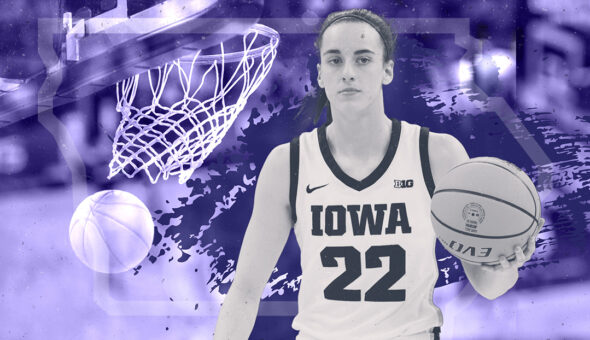In college, I studied creative writing and learned early on that “you are not your characters.” For young fictioneers (a sect prone to self-indulgence on the page), this is prudent advice: Don’t write about yourself. Kill your darlings. Fast. By focusing on yourself, you miss the story. Or — to be blunt — your story just isn’t that interesting. But here’s what I’ve learned about storytelling in higher education: Our stories are that interesting. Our students are superheroes. Our faculty are wizards. Our alumni are rock stars. But we are often overwhelmed with such numinous doubt. I call this doubt Google Analytics.
Are Analytics Strangling Higher Ed Storytelling?
Google Analytics plays an important role in your marketing strategy. But have we let that obsession go too far? It’s time to get back to the source—storytelling.

My relationship with GA is much like my relationship with my phone. I love it. It’s so much smarter than I am, and comes in a more attractive shell. But if I stare at it for too long, tracking the engagement of my digital doppelgängers, I can miss out on my actual life — or walk into traffic (same difference?). I have spent entire days salivating over analytics — creating reports and making recommendations for page optimizations and content changes, redesigns and overhauls. I am also not afraid to admit that GA has caught my own mistakes before I have — from 404s to ads showing up in unsavory places (thanks, referral insights).
Higher Ed content marketing is at a crossroads. Our capability to measure and track overwhelms our capacity to create.
But I must admit: For what we do today, the darling that must be killed is the mindset that execution must always start with analysis. Don’t freak out. I’m not saying to ditch your metrics. Just don’t let your metrics kill your stories before you have a chance to assign them.

Kill your darlings (or at least start with stories first)
Higher Ed content marketing is at a crossroads. Our capability to measure and track overwhelms our capacity to create. Our CRM software works at odds with our RCM budget models. Our own acronyms have become obstacles we must dodge on the page and on camera. If you don’t agree, I have a few questions for you:
- How many times have you asked a student or alum to repeat the actual name of a college, program or institute so that your video doesn’t sound like an ad for a youth basketball league?
- How many times do these acronyms show up prominently on your website’s inner pages and on institutional social media accounts?
- How many times have you been told you need to “own” and build content around keywords that Google tells you are viable due to search volume — yet your own child could tell you otherwise: that those keywords are only viable in the vacuum your institution has created for itself?
- How many times has writing the opening paragraph of a news item or long-form story felt like an exercise in obfuscation? Or self-flagellation?
- How many times have you killed a story or campaign you knew had serious legs because you sat in a room with your superiors and were told that X subject shouldn’t be the focus of Y project because of Z metric?
I love data. But, it’s time to get back to the source. Storytelling is simple. So why have we insisted on making it so complicated?
- It starts with an interview.
- That grows into a story.
- That resonates with a brand.
- And then we do our best work to share it in ways that will engage prospects, peers and press. And by best, I mean that we already know what we are doing, without having to consult Google. A good story is the best trench SEO.
At the very least, these stories engage and build a larger narrative. Sometimes, they set the foundation for multichannel campaigns. If we are lucky, we build things right. When the structure is sound, people will notice, and the metrics will corroborate. Metrics are vital, but sessions and open rates and CTRs are impossible without excellent stories. Paul Redfern, a friend of mine who also sits on the board of CUPRAP (College & University Public Relations and Associated Professionals) addressed this back in April in his Inside Higher Ed blog:
It’s our job to tell great stories that help support our brand strategy; to find a way to tie strategy and story together.
Paul nailed it. Our work doesn’t always have to start with an antiseptic analytics exercise. It should start with our people. We should tell their stories. They are the brand. They are the promises we keep, not the promises we make. The engagement will follow. So, as I venture into 2019 armed with an armada of analytics that allows my team to track everything, on every site, down to the granular level, I plan on closing my analytics dashboards for long enough to get some storytelling done. Google will let me know if the stories have legs. I’d just rather kill my own darlings.
Newsletter Sign up!
Stay current in digital strategy, brand amplification, design thinking and more.
Also in Marketing & Branding

Considering the Long-Term Impact of Rankings Changes
Pushback on the rankings metrics led to changes, but will these help students who prioritize ROI and the value of education?

How Much Is Caitlin Clark Worth to the University of Iowa?
The impact of the iconic women’s basketball player goes far beyond the court, and it will reach its crescendo over the next few weeks.

10 Higher Ed Rebrands Redefining College Identities
From Wisconsin’s shift to “Universities of Wisconsin” emphasizing inclusivity to Cleveland State’s “CSU 2.0” fostering emotional connections, higher ed institutions are strategically developing distinct identities.




